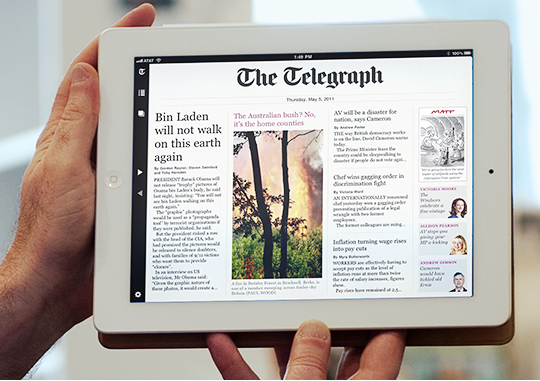- Plan early! Assume your digital strategy includes mobile and tablet devices, and plan accordingly at the start of campaign planning.
- Do your homework and follow best practices and a strategy framework – allow audience insights to drive your tactic and technology decisions.
- Commit to executing a truly mobile strategy including a great user experience.
*Does this iPad2 finally have a formidable competitor? Samsung Galaxy Tab 10.1 Limited Edition review
*This just underscores how important mobile devices are to retailers ... better have a solid smartphone and tablet strategy and an effective means of measuring mobile traffic to enhance user experience. eMarketer: Tablets Beating Smartphones For Mobile Shopping, Commerce | Mobile Marketing Watch
*HTML5 offers a great deal of promise. Whether it will encourage brands to forgo the app store is a question that won't immediately be answered. But, fascinating to see what's being done in this arena. Can Modern Mobile Web Apps Loosen Apple's Grip on Tablet Publishing?
*Not only are smartphone sales up but it's pretty clear that together with tablets --they are becoming an effective platform in reaching the wealthiest Americans . 61pc of wealthiest Americans own smartphones: study - Mobile Commerce Daily - Research
*Driving the explosive growth of the mobile marketing industry. Smartphone Sales Up 85% Year-Over-Year
If you’ve got questions about mobile for Mike or topic you’d like to see covered here – share your thoughts with us below or any of our social channels (Facebook, Twitter or in our User Forums)

 Last week at
Last week at  How can you be 100% certain that your mobile app is what your customers want? Launch it and watch how they actually use it.
How can you be 100% certain that your mobile app is what your customers want? Launch it and watch how they actually use it.  In a
In a  If you have merged your page and place together or just a place page, you'll have an addition option of a Sponsored Check-In (Check-In Story) will show activity at your location.
If you have merged your page and place together or just a place page, you'll have an addition option of a Sponsored Check-In (Check-In Story) will show activity at your location. DECONSTRUCTING THE NUMBERS
This campaign drove a 0.400% CTR on the first day, which fell by 45% within 48 hours to 0.220%. Ironically, the cost per click decreased over that time period, going from 26 cents to 15 cents. Therefore the eCPM (what we pay per 1,000 times we show the ad) went from over a dollar at the start to 33 cents at the end.
Two days in, this ad drove 515 clicks for $76 and gained 418 new fans. That works out to 18 cents per fan and a click-to-conversion rate of 81%. Most brands are getting fans at between $2 and $10, the former via self-serve and the latter via premium ads. Thus, 18 cents for a new fan-- a person giving your brand permission to talk to them— is a great cost of acquisition.
DECONSTRUCTING THE NUMBERS
This campaign drove a 0.400% CTR on the first day, which fell by 45% within 48 hours to 0.220%. Ironically, the cost per click decreased over that time period, going from 26 cents to 15 cents. Therefore the eCPM (what we pay per 1,000 times we show the ad) went from over a dollar at the start to 33 cents at the end.
Two days in, this ad drove 515 clicks for $76 and gained 418 new fans. That works out to 18 cents per fan and a click-to-conversion rate of 81%. Most brands are getting fans at between $2 and $10, the former via self-serve and the latter via premium ads. Thus, 18 cents for a new fan-- a person giving your brand permission to talk to them— is a great cost of acquisition.
